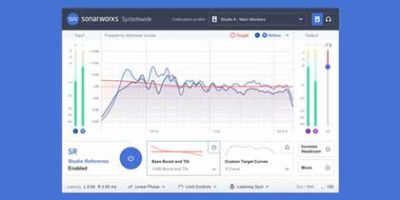Does Sonarworks’ Reference 4 Calibration Software Actually Work?
Sonarwork’s Reference software seems almost too good to be true. It promises to remove unwanted coloration from studio speakers and headphones. Intrigued producers and engineers have every right to be skeptical of such a product, and they typically have a lot of questions about the software.
Create Digital Music’s (CDM) Peter Kirn answered a number of questions about Sonarworks’ Reference 4 software this week that should hopefully satisfy the curiosity of many. Before getting too far ahead of myself, let’s take a closer look at the problem Reference 4 aims to correct. From the article titled “What it’s like calibrating headphones and monitors with Sonarworks tools” that CDM published December 3, 2018, a perfect explanation is provided:
“First, let’s understand what calibration is. Even studio headphones will color sound – emphasizing certain frequencies, de-emphasizing others. That’s with the sound source right next to your head. Put monitors in a room – even a relatively well-treated studio – and you combine the coloration of the speakers themselves as well as reflections and character of the environment around them.
The idea of calibration is to process the sound to cancel out those modifications. Headphones can use existing calibration data. For studio speakers, you take some measurements. You play a known test signal and record it inside the listening environment, then compare the recording to the original and compensate.”
To perhaps oversimplify things, Reference 4 essentially applies an EQ curve to your system’s output signal based on the information you provide it. There are various headphone profiles included with the software, and when you buy Sonarwork’s calibration microphone, you can create a custom calibration profile for your studio speakers.
When asked, “Does it work?” Kirn says, “Oh yeah, this one is easy. I found it instantly easier to mix both on headphones and sitting in the studio, in that you hear far more consistency from one listening environment/device to another, and in that you get a clearer sense of the mix. It feels a little bit like how I feel when I clean my eyeglasses.”
From my personal experience with the software, I can personally vouch for its usefulness. It has significantly improved my monitoring situation and has allowed me to mix and master music more accurately. Listening to mixes I’ve created in the past makes me really want to kick myself in the pants. Issues that weren’t apparent before suddenly becoming abundantly obvious. Overall, it’s quite an awakening experience.
Read Kirn’s full article via CDM to learn more about common Reference 4 questions regarding supported operating systems, latency, loudness, and headphone support. Also, feel free to download a copy of Reference 4 for free and demo it yourself.
Charles Hoffman is a Mixing and Mastering Engineer at Black Ghost Audio. After graduating from the University of Manitoba with an English degree, Charles completed his education at Icon Collective in Los Angeles, CA.
Please note: When you buy products through links on this page, we may earn an affiliate commission.







